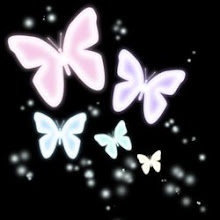The aging process is commonly divided into three stages. They are the subclinical stage, the transitional stage, and the clinical stage.
In the subclinical stage, hormone production level decreases. Testosterone, growth hormone, and estrogen are only a few of them. Free radicals may start to disrupt our cell's DNA. These processes however are not visible from the outside. There are no symptom or complaint of aging here. This stage happens around the age of 25 to 35, still can be considered young.
The next stage, called the transitional stage, happens around the age of 35 to 45. Hormone level drops to around 25 %. Muscle mass also starts to decrease, while body fat composition increases. People at this stage may complain about losing energy, losing the "spark". The changes in hormone level, muscle mass, and body fat might cause insulin resistance, higher risk of coronary heart disease, and higher risk of obesity. Other symptoms may appear, such as vision and hearing deterioration, lower melanocytes activity, lower skin elasticity, and lower libido, the bane of human kind. Around this period, people may look less fresh and less young.
The last is the clinical stage that happens over the age of 45. The level of hormone production continues to drop. It may start to effect the gastrointestinal tact and disrupt nutrition absorption, including vitamins and minerals absorption. Besides muscle mass, bone density also starts to decrease. Lack of energy significantly disturbs daily activity. Sexual dysfunction is more prominent. All in all, it's an impending disaster waiting to explode.
In the subclinical stage, hormone production level decreases. Testosterone, growth hormone, and estrogen are only a few of them. Free radicals may start to disrupt our cell's DNA. These processes however are not visible from the outside. There are no symptom or complaint of aging here. This stage happens around the age of 25 to 35, still can be considered young.
The next stage, called the transitional stage, happens around the age of 35 to 45. Hormone level drops to around 25 %. Muscle mass also starts to decrease, while body fat composition increases. People at this stage may complain about losing energy, losing the "spark". The changes in hormone level, muscle mass, and body fat might cause insulin resistance, higher risk of coronary heart disease, and higher risk of obesity. Other symptoms may appear, such as vision and hearing deterioration, lower melanocytes activity, lower skin elasticity, and lower libido, the bane of human kind. Around this period, people may look less fresh and less young.
The last is the clinical stage that happens over the age of 45. The level of hormone production continues to drop. It may start to effect the gastrointestinal tact and disrupt nutrition absorption, including vitamins and minerals absorption. Besides muscle mass, bone density also starts to decrease. Lack of energy significantly disturbs daily activity. Sexual dysfunction is more prominent. All in all, it's an impending disaster waiting to explode.

Tidak ada komentar:
Posting Komentar